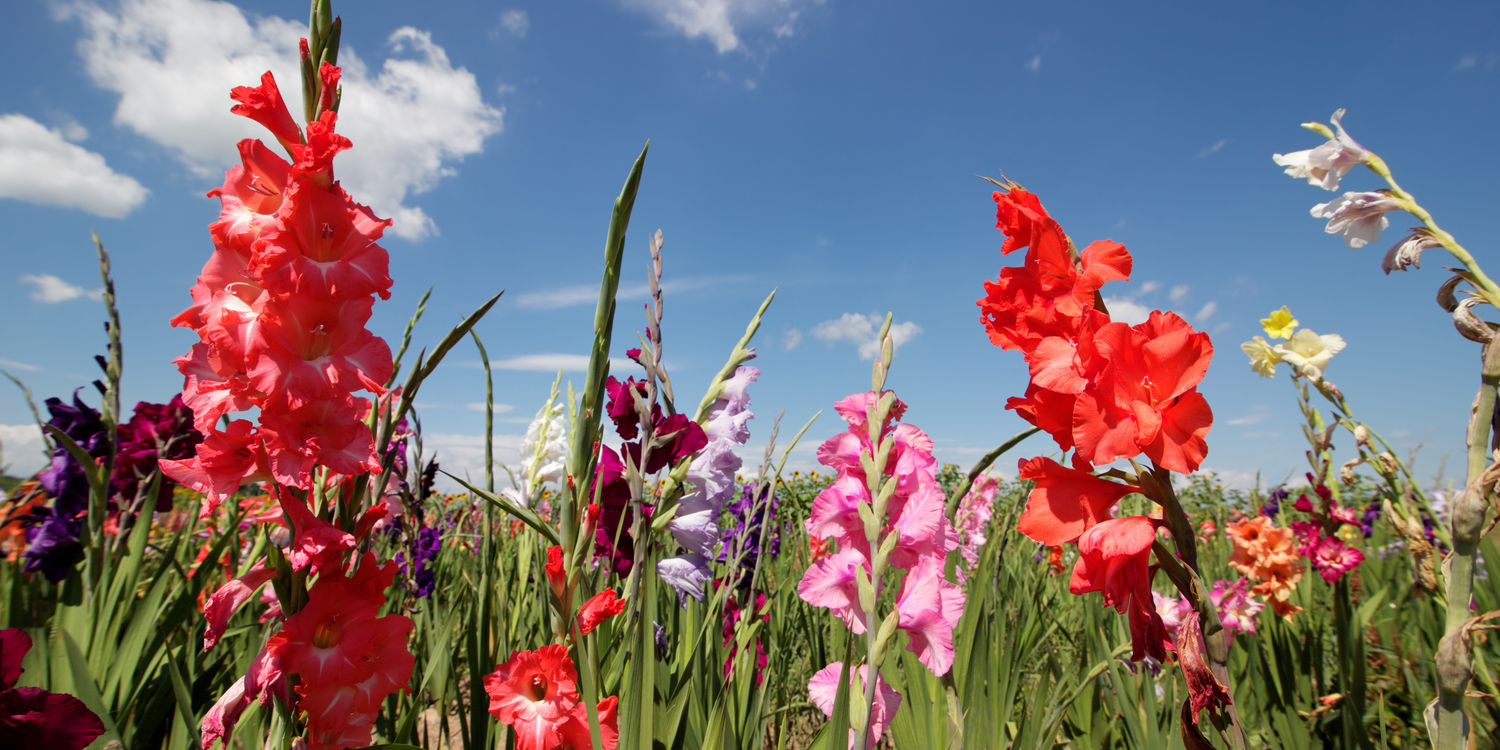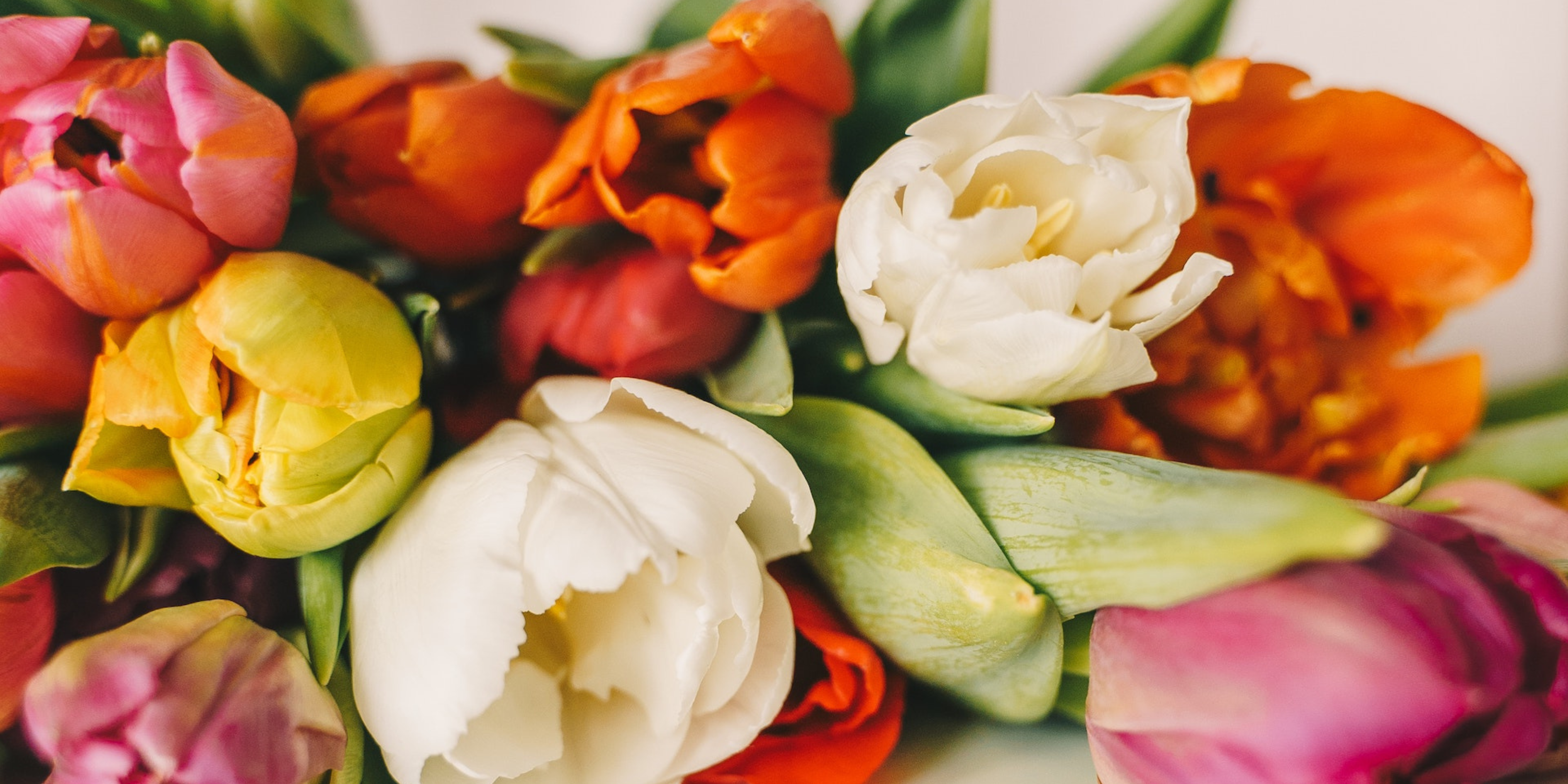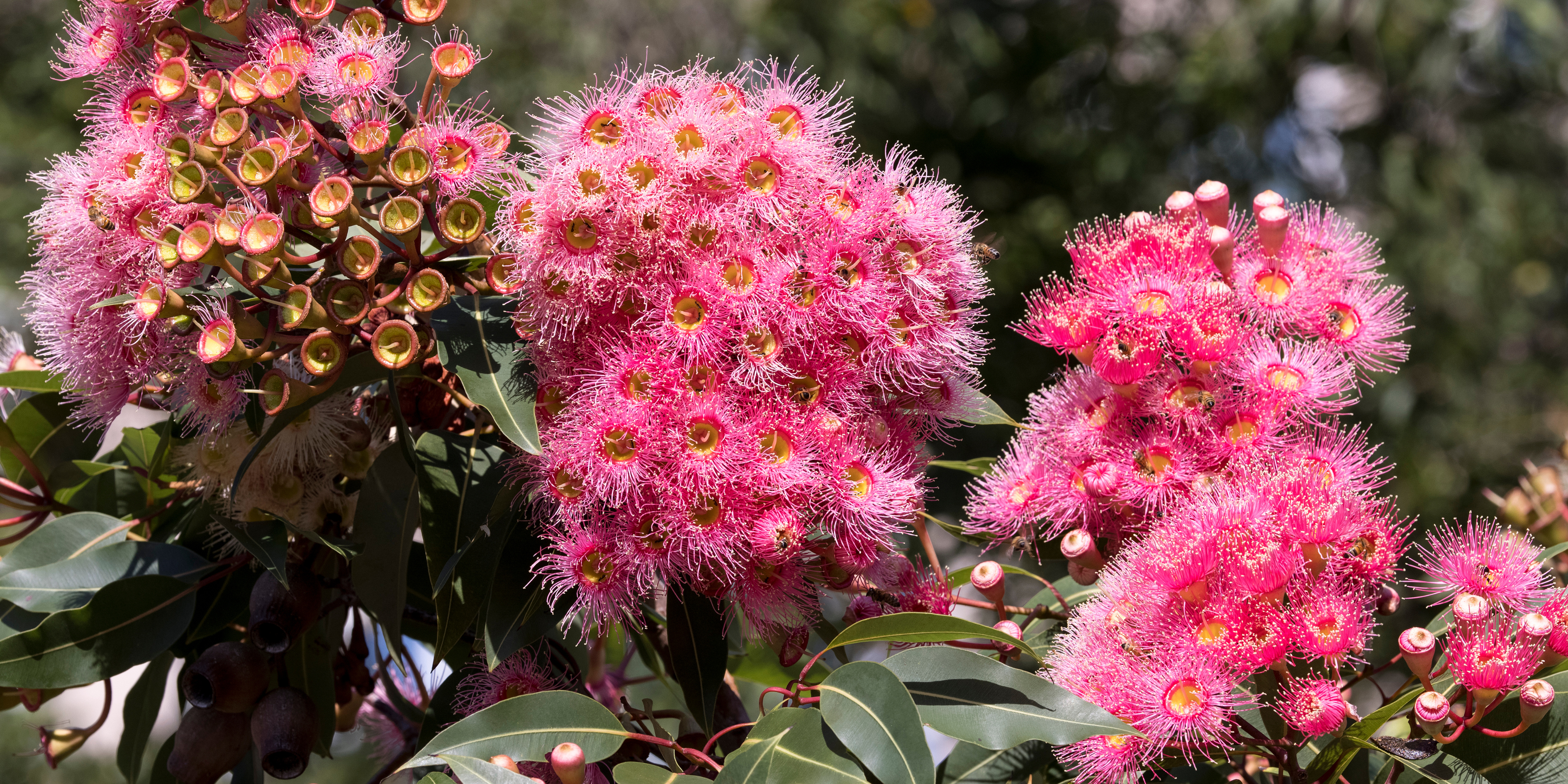There’s nothing quite like a bunch of fresh blooms to brighten the home. While it would be impossible for us to pick our favourite flower variety (we’re florists, after all), we must admit that gladioli, nicknamed "glads", have a special place in our hearts.
The perennial gladiolus flower is known and loved for its tall, sword-like stalk and its trumpet-shaped flowers, which bloom in an array of beautiful, bold colours. Gladioli make the perfect statement flower in any arrangement and have been traditionally gifted for some of life’s most special celebrations, including anniversaries, Valentine’s Day, and birthdays.
In this guide, we share everything you need to know about these wondrous blooms, exploring the gladiolus flower's meanings, symbolism, and history. We’ll also explain how to take care of your freshly-cut gladioli.
Gladiolus Flower Meaning

The meaning behind the gladiolus flower is actually rooted in ancient history, stemming from ancient Roman times.
The name ‘gladiolus’ stems from the Latin word ‘gladius’, which means ‘little sword’. Gladioli have also been referred to as xiphium, which comes from the Greek word, xiphios — also meaning ‘sword’. Given the gladiolus's sword-like shape, it's easy to see why it was given this name.
Gladiolus flowers were also associated with Roman gladiators, who are said to have worn the flowers around their necks for protection while in battle.
Gladiolus Flower Insights and History
Gladiolus flowers actually originated in South Africa, though some species are native to Europe and the Mediterranean region. Today, they can be found all over the world.
During the 18th century, African gladioli were transported from South Africa to Europe through the Indian Trade Route. From here, hybridisation began in Britain, and the first hybridised flowers were produced and sold in 1823 by James Colville.
Gladioli became prominent in America during the late 19th and early 20th centuries. They were so popular that an American Gladiolus Society formed in 1910 in Boston, which held 75 members and worked to encourage the cultivation of gladiolus flowers and explore their medicinal properties.
It was found that gladiolus plants did indeed have medicinal value, and the flowers were used in Britain and the Mediterranean regions to aid healing. The English used the plant’s corms (the stem base) as a bandage and a tool to remove thorns or splinters from the skin. The corms were also ground into powder and mixed with goat’s milk to alleviate symptoms of colic.
While they were traditionally used medicinally, it has been discovered that some parts of the flowers are poisonous, and some species can cause irritation or an allergic reaction when handled.
From the initial seven varieties of gladioli found in South Africa, more than 250 species have since been cultivated.
Today, gladioli are mainly used for decorative purposes. And decorative, they are! Gladioli come in a variety of heights, colours, sizes, patterns, and shapes, so there really is a gladiolus flower for every style of bouquet.
Gladiolus Flower Symbolism
 All flowers carry a special symbolic meaning, and gladiolus flowers are no exception. These blooms are very rich in symbolism.
All flowers carry a special symbolic meaning, and gladiolus flowers are no exception. These blooms are very rich in symbolism.
Generally, gladioli represent strength of character, faithfulness, moral integrity, and remembrance. Gladioli are actually the traditional 40th-anniversary flower and the birth flower for the month of August!
Each individual colour of gladiolus is also symbolic.
Red gladioli symbolise passion, romance, and love, and are traditionally gifted for Valentine’s Day, wedding anniversaries, and birthdays.
White gladiolus flowers are representative of purity and spirituality. They are the perfect gift for weddings, funerals, and religious ceremonies.
Yellow and orange glads are often gifted to communicate well wishes and congratulations, as they symbolise positivity, happiness and friendship.
Perhaps the most striking of the bunch, purple gladiolus flowers are symbolic of grace, nobility, and beauty, and are usually gifted in celebration of a new job or a new home.
The classic pink gladiolus flower is representative of femininity, gentleness, and love—particularly a mother’s love. They are frequently offered as a gift on Mother’s Day, date nights, or birthdays.
What Flowers Work with Gladioli in an Arrangement?
 With their incredible height and statement shape, glads can make a stunning bouquet all on their own. In an arrangement with other flowers, gladioli are best used as an accent or focal flower, placed at the back of the bouquet or to the side.
With their incredible height and statement shape, glads can make a stunning bouquet all on their own. In an arrangement with other flowers, gladioli are best used as an accent or focal flower, placed at the back of the bouquet or to the side.
There are a number of beautiful blooms that perfectly complement gladioli, but these are some of our absolute favourites!
- Roses
- Hydrangeas
- Chrysanthemums
- Oriental Lilies
- Asters
- Irises
How to Care for Cut Gladiolus Flowers
So, you’ve received a beautiful bunch of gladiolus flowers (lucky you!). Let’s get them ready to display in your home!
Follow each of the below steps to ensure your gladioli last as long as possible.
Prepare your stems
If your glads are fresh from the field, you’ll need to wash any dirt or debris from each of the flower stems. Pop the stems in a bowl of water and give them a gentle scrub. If they're from a florist, this step should have already been completed.
Next, strip off any leaves that will sit below the water line of your vase to prevent the build-up of mould and bacteria.
Snip the stems diagonally with a pair of clean secateurs, or alternatively a sharp knife or scissors. A blunt blade will result in an uneven cut and may tear the stems, so go with your sharpest option. If possible, snip the stems underwater, as this can prevent the formation of air bubbles, which may block water uptake.
If your flowers haven't already been arranged by a florist, consider trimming the stems to different lengths, too. This will help create layers in the vase.
Choose your vase
When it comes to displaying your gorgeous glads, choosing the right vase makes all the difference.
Gladioli are tall and spiky, so they are best housed in a tall vase. The height of the vase should be at least a third of the length of the flower. This will ensure that the gladioli are properly supported and will also showcase their height and shape beautifully.
You can trim the height of the stems further if you don't have a tall enough vase, but this may result in the blooms losing their impact in a bouquet.
Put it all together

Glads are particularly sensitive to fluoride, so if possible, use filtered, non-fluoridated water to fill your vase.
Additionally, adding too much water to the vase can cause bacteria and grime to build up on the stems, which can reduce the flowers’ lifespan. Fill the vase about two-thirds of the way, at most.
Remember to dissolve some flower food in the water for the stems to snack on. This will help the buds open up and prevent wilting. When you purchase a bunch of blooms from Floraly, you’ll receive a complimentary sachet of flower food, so you won’t have to worry about sourcing your own.
Finally, in go the flowers! Not sure how to put together an arrangement? Check out our blog on how to arrange your flowers like a pro. Try putting the tallest stems towards the back and shorter stems towards the front to create a layered look.
Once your arrangement is ready, place the vase in a warm room to promote growth.
Maintain your flowers
We know you’ll want your glorious gladiolus flowers to remain alive and well for as long as possible, so let’s take a look at how to keep those blooms healthy:
- Change the vase water every few days and remove any wilted blooms and foliage as you go. Give the vase a rinse and replace the flower food, as well
- Trim the stems by an inch or so each time you change the water. This promotes water uptake and will help keep your glads hydrated—they are thirsty flowers, so this step is key
- Keep gladiolus flowers away from ripening fruits or veggies, which emit ethylene—ethylene can case gladiolus flowers to deteriorate quickly.
A Note on Pets and Gladiolus Flowers
Just like irises, lilies and tulips, gladioli can be poisonous when ingested by cats, dogs, and other household pets. It's important to keep them out of reach of your furry friends to prevent serious illness.
Although they’re considered safe for humans, contact with the flower sap can cause skin irritation, so it’s best to wear gloves or take special care when tending to the blooms.
***
And there you have it! Meanings, insights and history of the glorious gladiolus flower. Don't forget to check out other articles in our Flower Insights series, including one on orchids and one on daffodils.
Or you can explore our Flower Delivery Melbourne and Flower Delivery Sydney collections to see what flowers we can deliver to your loved ones in these locations.



